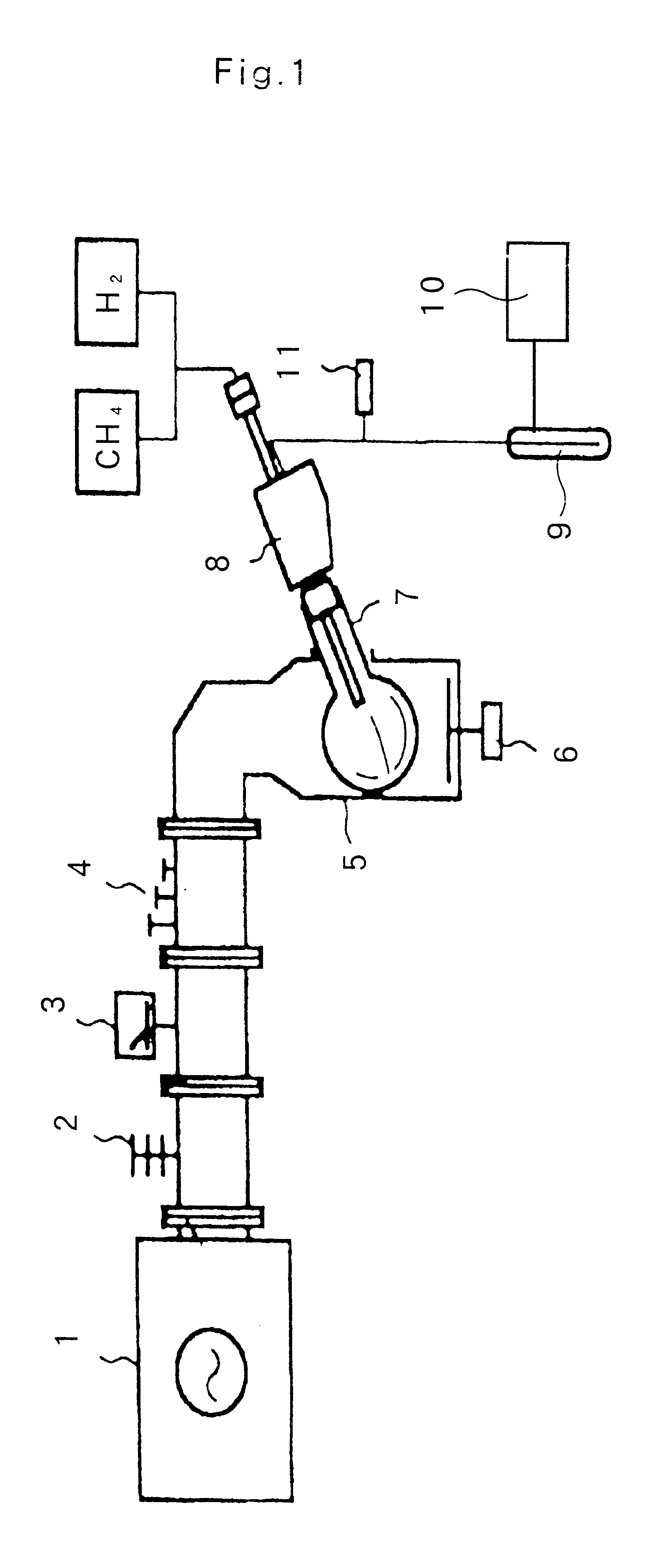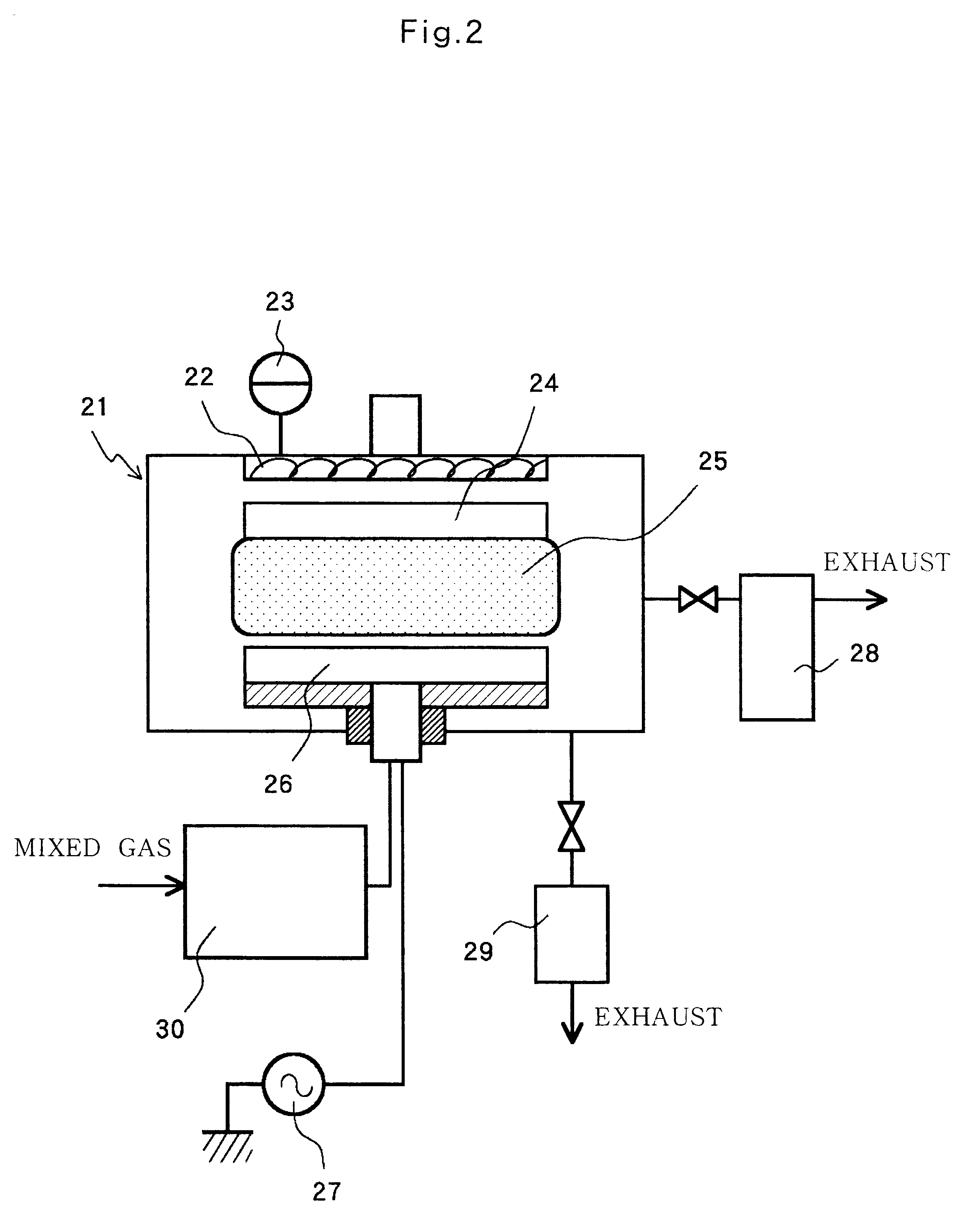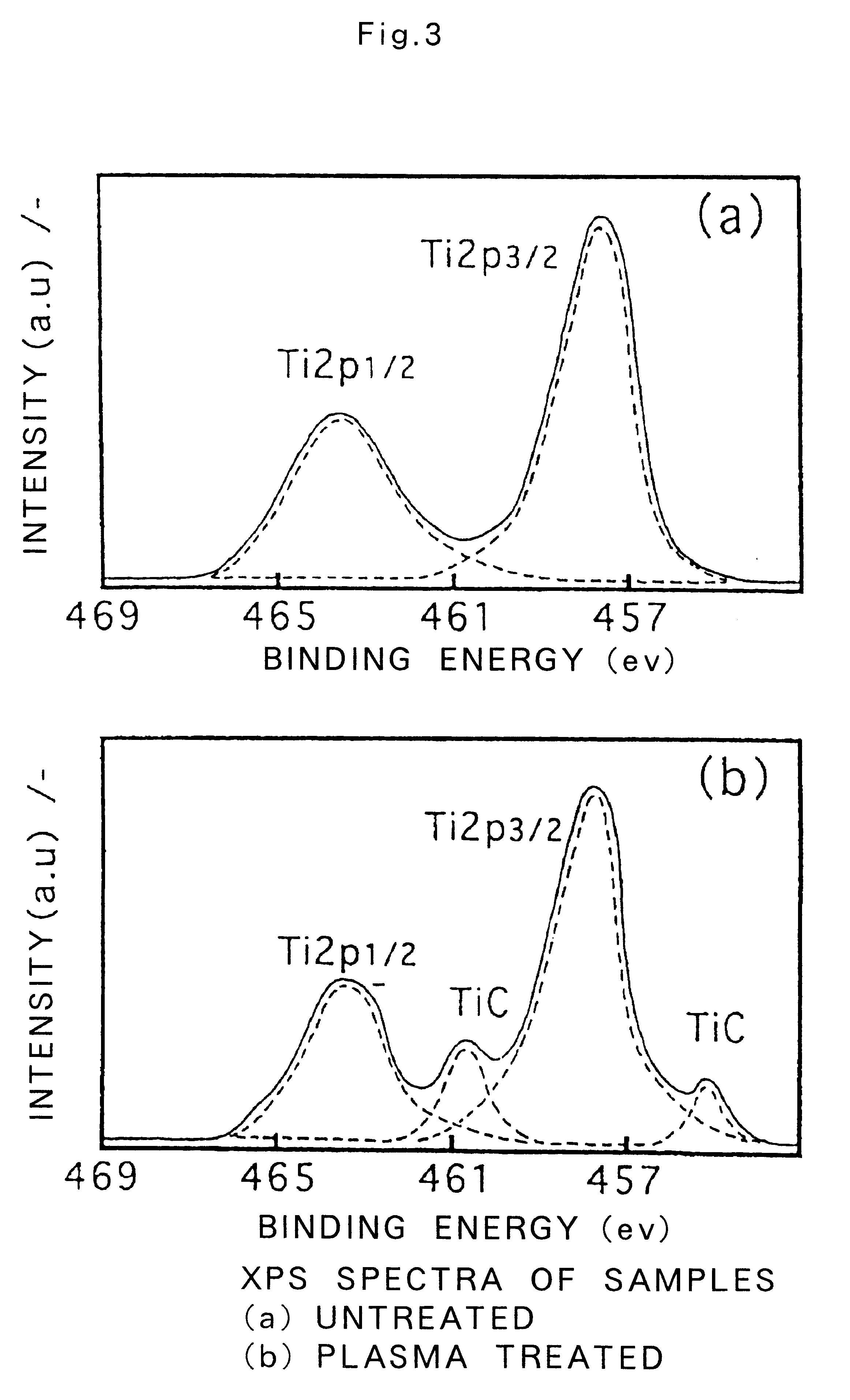Photocatalyst having visible light activity and uses thereof
a photocatalyst and visible light technology, applied in the direction of catalyst activation/preparation, physical/chemical process catalysts, separation processes, etc., can solve the problems of adverse and invisible effects on human bodies, adverse effects on human bodies, adverse effects on infants' bodies,
- Summary
- Abstract
- Description
- Claims
- Application Information
AI Technical Summary
Problems solved by technology
Method used
Image
Examples
example 1
An anatase type titania powder of 20 to 80 meshes, 2 grams were housed in a quartz reaction tube 7 having a capacity of 200 ml. After the system interior was vacuumed by a vacuum pump, plasma was generated by a Tesla coil while electromagnetic wave (2.45 GHz) was radiated at 400 W. A CH.sub.4 1% and H.sub.2 mixed gas, which was adjusted as to flow with a flow amount of 30 ml / min by a mass flowmeter as to have a prescribed mixing ratio, was introduced to create a pressure of 1 Torr, and the quartz reaction tube 7 was treated for one hour while rotated at 70 rpm. The spectrum of the generated plasma indicated production of highly active decomposed products, --CH. A powder whose surface only became gray was obtained after this treatment. It was confirmed through a fluorescent X-ray that chrome and vanadium were doped in the original anatase type titania powder.
FIG. 3 shows a bond energy spectrum of specimens subjected to the plasma treatment as well as to not subjected to the treatment...
examples 2 to 4
An anatase type titania powder was treated in plasma in the same manner as in Example 1 except the electromagnetic wave was changed at 200 W(Example 2), 300 W(Example 3), and 500 W(Example 4), and powders were obtained whose surface only turned into gray.
The follow table shows the TiC supported amounts obtained through the XPS spectrum.
The powders obtained in Examples 1 to 4 were examined through a DTA-TGA analysis. A heat generation in a region exceeding 700.degree. C. in the differential thermal analysis (DTA), through slight, was observed in the specimen of Example 2, the heat generation peaks per unit weight of the specimen became larger in the order of Example 3, Example 1, and Example 4. Increased weight at a temperature exceeding 500.degree. C. in the thermal gravimetric analysis (TGA) was slight in Example 2 but was observed to become larger per unit weight of the specimen in the order of Example 3, Example 1, and Example 4.
example 5
(Preparation of a Photocatalyst Unit, Vol. 1)
The photocatalyst obtained in Example 1 was made in a paste form with methanol, and this paste was coated on a glass substrate of 60.times.60 mm in an amount corresponding to 0.2 g of the photocatalyst and heated for one hour in an electric furnace at 300.degree. C. (in air atmosphere) to obtain a photocatalyst unit of the invention.
PUM
| Property | Measurement | Unit |
|---|---|---|
| temperature | aaaaa | aaaaa |
| temperature | aaaaa | aaaaa |
| temperature | aaaaa | aaaaa |
Abstract
Description
Claims
Application Information
 Login to View More
Login to View More - R&D
- Intellectual Property
- Life Sciences
- Materials
- Tech Scout
- Unparalleled Data Quality
- Higher Quality Content
- 60% Fewer Hallucinations
Browse by: Latest US Patents, China's latest patents, Technical Efficacy Thesaurus, Application Domain, Technology Topic, Popular Technical Reports.
© 2025 PatSnap. All rights reserved.Legal|Privacy policy|Modern Slavery Act Transparency Statement|Sitemap|About US| Contact US: help@patsnap.com



